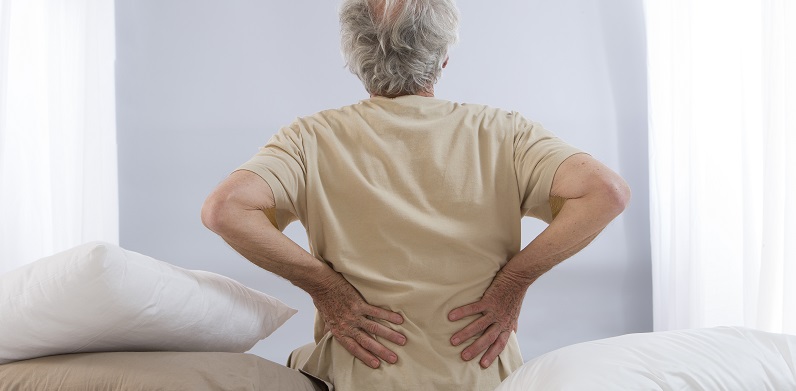5 Common Causes Of Back Pain In Your 70s
Category: Back Pain | Author: Stefano Sinicropi

Back pain affects people of all ages, but we’d be lying if we said that it affects all age groups the same. Older individuals are at a heightened risk for back problems for a number of different reasons, most notably because they’ve been putting stress and strain on their spines for a longer period of time. But which spinal conditions are most likely to affect individuals as they live life to the fullest during retirement? In today’s blog, we take a closer look at some common causes of back pain for people in their seventies and some simple treatment options.
Back Pain In Your 70s
Back problems may be more common in your seventies, but as we’ve said in previous posts, that doesn’t mean back pain is normal. If you’re dealing with shooting pain or chronic discomfort, talk to a specialist. We can help determine if you’re dealing with one of these common issues:
- Degenerative Disc Disease – The more stress we put on our spine over the years, the more likely we’ll suffer from micro degeneration and slow disc height loss. It’s a natural process, but you should still work to slow this down by exercising regularly, watching what you eat, and maintaining a healthy weight. As spinal discs lose height, they are more prone to shift and can compress nearby nerves and soft tissues.
- Stress Fractures – Our bodies work to constantly produce new healthy bone, but our ability to do this effectively slows down as we get older. This means we’re susceptible to gradual bone loss and spinal fractures, especially if we don’t regularly get enough calcium and Vitamin D in our diets. Post-menopausal women are at especially high risk for these types of stress fractures.
- Spinal Stenosis – Over time, our spinal canal can narrow and impinge crucial nerves. This can lead to shooting pain, numbness, and weakness in the extremities. Medications and physical therapy can help reduce symptoms, but for severe cases, surgery may be necessary. Maintaining a healthy posture and ideal weight are two things you can do to reduce your spinal stenosis risk as you get older.
- Fall-Related Fractures – Balance issues are more common in older individuals, which is why our fall risk increases as we age. Even falls of just a couple of feet onto the ground can have devastating consequences, so you need to be mindful of tripping hazards and consider assistive walking devices if you have balance problems. Falls are the leading cause of emergency room visits for patients over the age of 70, so consider some balance training exercises and be aware of your risk.
- Curvature Disorders – Finally, spinal curvature disorders tend to affect two main groups – teens who are still developing and older individuals who suffer vertebral shifting from decades of stress on the spine. Age-related kyphosis of the spine is especially common in women, and it can severely increase their fracture risk. Maintaining an ideal weight, minding your posture, avoiding repetitive spine strain, and getting optimal nutrient intake can all help prevent curvature issues in older populations, while physical therapy and surgery can help slow the curve or reduce symptoms.
No matter your age, if you are dealing with spine pain, reach out to Dr. Sinicropi and his team today to help figure out what’s going on and develop a plan to effectively treat it.